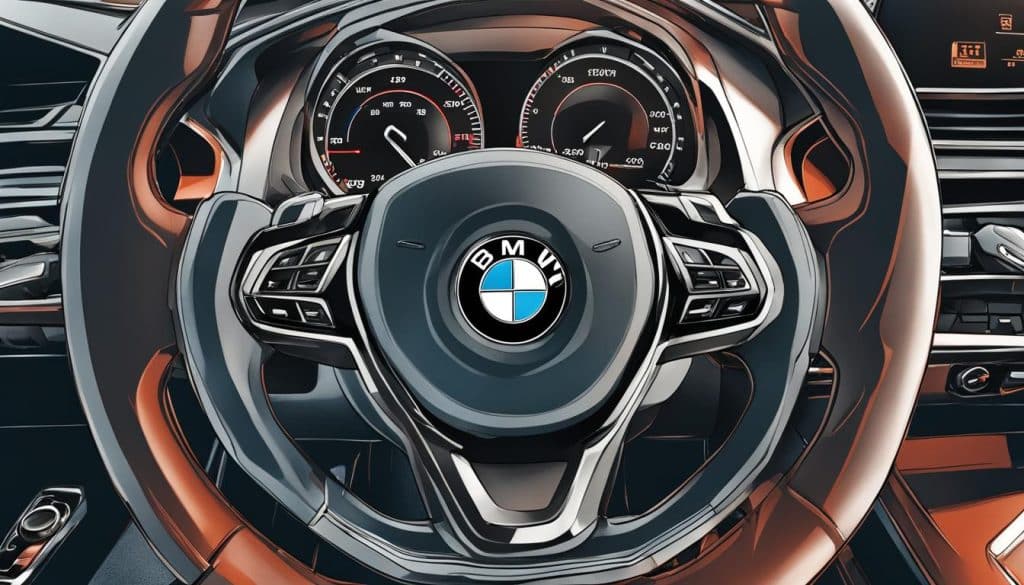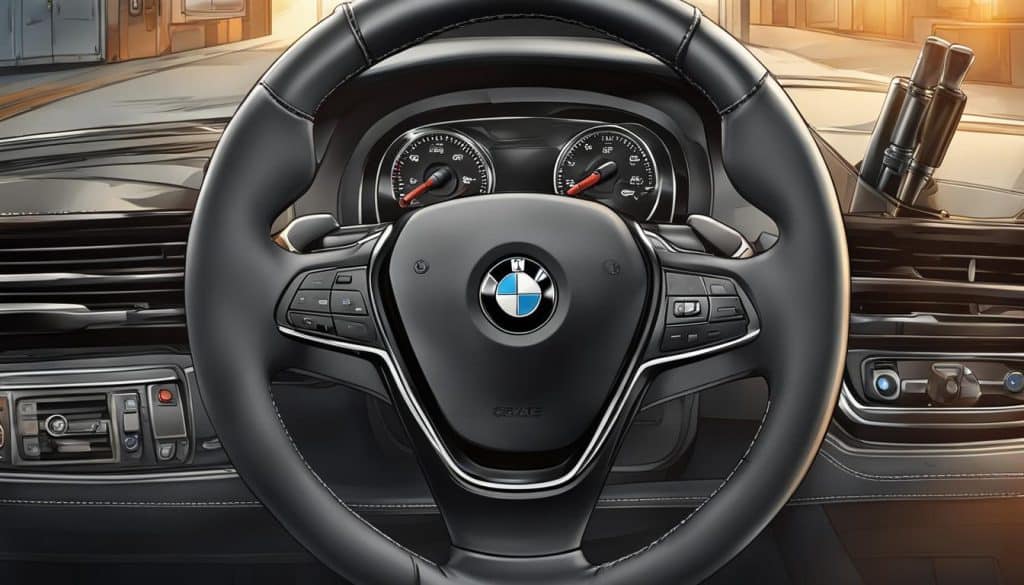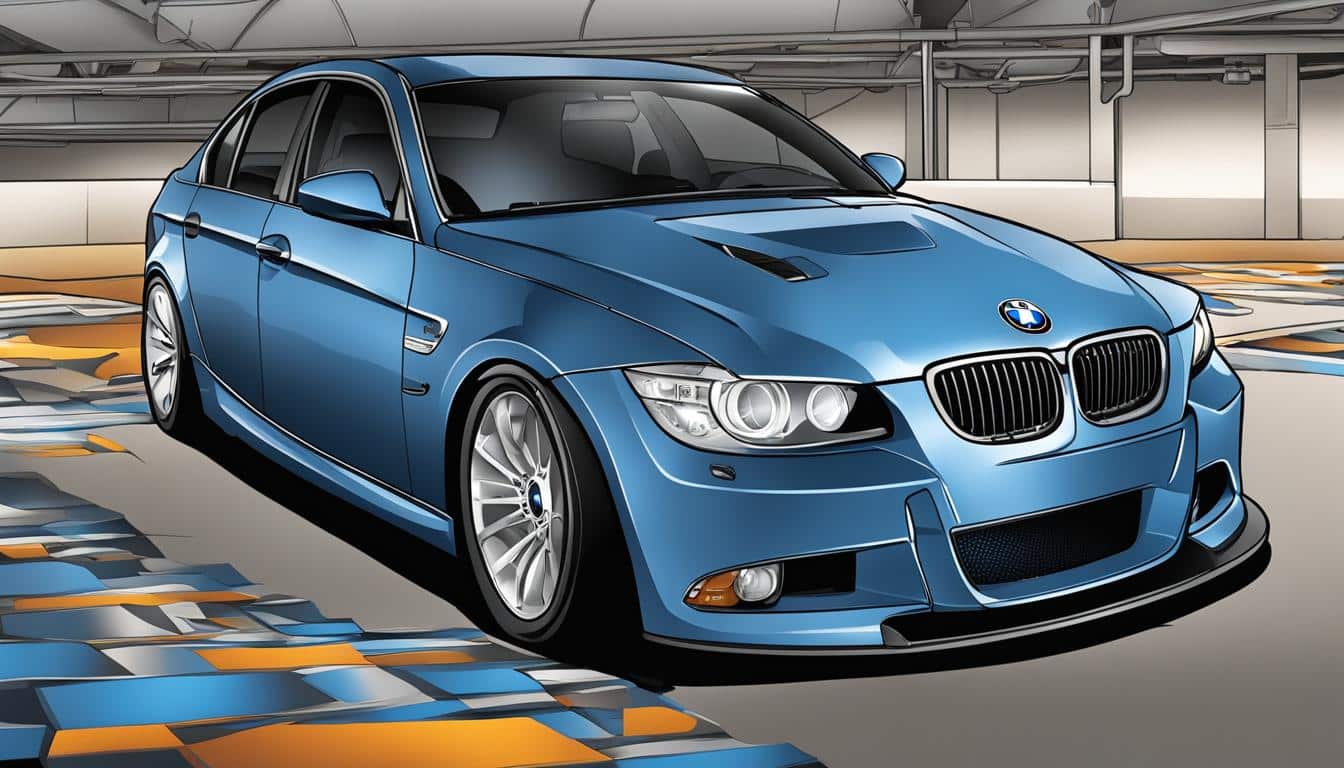Are you experiencing noise when turning the steering wheel in your BMW E90? Don’t worry, you’re not alone. Many BMW 3 series owners have encountered this issue, and it can be quite unsettling. The noise, described as knocking, clicking, or squeaking, typically originates from the steering rack or column. But fear not, in this article, we will explore the common causes of this problem and provide you with tips and fixes to solve it.
- Worn tie rods or sway bar stabilizers could be the cause of steering wheel noise in your BMW E90.
- A faulty steering rack or column, as well as rubbing between the steering wheel trim and other parts, may also contribute to the noise.
- Consider lubricating the steering spindle bearings and adjusting the steering wheel trim and slip ring as potential solutions.
- If these fixes don’t work, it may be necessary to replace worn components like tie rods, sway bar stabilizers, or the entire steering rack or column.
- Regular maintenance and inspections can help prevent steering wheel noise and ensure optimal steering performance.
Common Causes of Steering Wheel Noise in BMW E90
If you’re experiencing a strange noise while turning or a buzzing sound when turning the steering wheel in your BMW E90, there are several common causes that could be the culprit.
Tie rods and sway bar stabilizers
One possible cause is worn tie rods or sway bar stabilizers. These components can become loose or worn out over time, leading to noise when the steering wheel is turned. Regular inspection and maintenance can help prevent this issue.
Faulty steering rack or column
Another potential cause of steering wheel noise is a faulty steering rack or column. This can result in knocking or clicking sounds. If you suspect this is the issue, it’s important to have it diagnosed and repaired by a qualified mechanic.
Steering wheel trim and slip ring
The steering wheel trim or slip ring could be rubbing against other parts, causing a squeaking noise. Checking and adjusting the trim, as well as applying a lubricant to the slip ring, may help alleviate the noise.
By identifying the specific cause of the noise, you can take the necessary steps to address the issue and enjoy a quieter driving experience in your BMW E90.
Lubricating the Steering Spindle Bearings
One common fix for steering wheel noise in BMW E90 models is to lubricate the steering spindle bearings. These bearings, located at the bottom and top of the steering spindle, can become dry and cause squeaking or creaking sounds. To lubricate the bearings, the car needs to be jacked up, and a lubricant spray with a long flexible tube can be used to reach the bearings. Tri-Flow or a similar penetrating lubricant is recommended. It’s important to thoroughly coat the bearings and manipulate them to ensure the lubricant is distributed evenly. This can help reduce or eliminate the noise.

Regular lubrication of the steering spindle bearings can be a preventive measure to keep them in good condition and prevent noise from developing. It is recommended to include this task as part of routine maintenance for BMW E90 vehicles.
Procedure for Lubricating Steering Spindle Bearings:
- Jack up the car and secure it with jack stands for safety.
- Locate the steering spindle bearings at the bottom and top of the steering spindle. They will be visible once the protective covers are removed.
- Use a lubricant spray with a long flexible tube to reach the bearings. Tri-Flow or a similar penetrating lubricant is recommended.
- Thoroughly coat the bearings with the lubricant, ensuring all surfaces are covered.
- Manipulate the bearings by turning the steering wheel back and forth to distribute the lubricant evenly.
- Once the lubricant is applied, reassemble any protective covers that were removed.
- Lower the car from the jack stands and test the steering wheel for any remaining noise. If the noise persists, further investigation may be required.
By following these steps, you can effectively lubricate the steering spindle bearings in your BMW E90 and mitigate steering wheel noise issues.
Checking and Adjusting the Steering Wheel Trim and Slip Ring
If you’re experiencing grinding or clicking noises when turning the steering wheel in your BMW E90, one potential solution is to check and adjust the steering wheel trim and slip ring. Over time, the steering wheel trim can rub against other parts, causing unnecessary friction and noise. By inspecting the trim for any signs of rubbing or damage and making necessary adjustments, you can help alleviate the noise and improve your driving experience.
Additionally, applying a light coating of copper paste lubricant to the slip ring can help reduce friction and prevent noise. The slip ring is an electrical connector located behind the steering wheel, and lubricating it can ensure smooth operation and minimize any clicking or grinding sounds.
It’s important to follow the proper procedures outlined in the Bentley manual when removing and reinstalling the steering wheel to access the trim and slip ring. This will help ensure that the adjustments are made correctly and safely.

Table: Steps to Check and Adjust Steering Wheel Trim and Slip Ring
| Steps | Description |
|---|---|
| 1 | Safely jack up the vehicle and remove the necessary components to access the steering wheel. |
| 2 | Inspect the steering wheel trim for any signs of rubbing or damage. Make adjustments as needed to ensure it doesn’t contact other parts. |
| 3 | Apply a light coating of copper paste lubricant to the slip ring to reduce friction and prevent noise. |
| 4 | Reinstall the steering wheel and other components following the proper procedures outlined in the Bentley manual. |
By following these steps and ensuring that the steering wheel trim and slip ring are properly adjusted and lubricated, you can potentially eliminate grinding and clicking noises when turning the steering wheel in your BMW E90.
Replacing Worn Components
If lubricating the steering spindle bearings and adjusting the steering wheel trim and slip ring do not resolve the steering wheel noise, it may be necessary to replace worn components. This could include the tie rods, sway bar stabilizers, or even the entire steering rack or column. Consulting a qualified BMW technician or mechanic is recommended to accurately diagnose the issue and determine the appropriate replacement parts needed. It’s important to address worn components promptly to prevent further damage and ensure smooth and quiet steering.
When it comes to solving the screeching noise when turning the steering wheel on your BMW E90, replacing worn components is sometimes the only solution. Over time, the tie rods, sway bar stabilizers, and other steering components can wear out, leading to excessive noise and potential safety issues. If lubricating the steering spindle bearings and adjusting the steering wheel trim and slip ring do not alleviate the noise, it’s crucial to consult a qualified professional to accurately diagnose the problem and determine which components need to be replaced.
Table: Common Worn Components in BMW E90 Steering System
| Component | Potential Issues |
|---|---|
| Tie rods | Loose or worn-out tie rods can cause knocking or clicking sounds when turning the steering wheel. |
| Sway bar stabilizers | Worn sway bar stabilizers can result in noise and instability during steering maneuvers. |
| Steering rack or column | A faulty steering rack or column can develop issues such as knocking or clicking sounds, requiring replacement. |
Once the specific worn components have been identified, it’s essential to have them replaced by a qualified professional who has experience working on BMW E90 models. This ensures that the replacement parts are of high quality and properly installed, restoring the smooth and quiet operation of the steering system. Addressing worn components promptly not only eliminates the annoying screeching noise but also helps maintain the overall safety and performance of your BMW E90.
User Experiences and Community Discussions
When it comes to solving the steering wheel noise issue in BMW E90 models, user experiences and community discussions can offer valuable insights and alternative solutions. Many BMW E90 owners have shared their own experiences and strategies for dealing with the problem, providing a diverse range of perspectives.
One common fix that users have found success with is lubricating the steering spindle bearings. This involves jacking up the car and using a long flexible tube to spray a lubricant onto the bearings. Tri-Flow or a similar penetrating lubricant is recommended for this task. By thoroughly coating the bearings and ensuring even distribution of the lubricant, users have been able to reduce or eliminate the noise.
Other users have had to resort to replacing worn components to resolve the steering wheel noise. This could include tie rods, sway bar stabilizers, or even the entire steering rack or column. Consulting with a qualified BMW technician or mechanic is crucial in accurately diagnosing the issue and determining the appropriate replacement parts needed.
| Fix | Effectiveness |
|---|---|
| Lubricating the steering spindle bearings | Effective for reducing or eliminating noise |
| Replacing worn components | Effective, but requires professional diagnosis and replacement |
While some fixes may work for certain individuals, it’s important to note that not all solutions will be universally effective. The key is to consider the experiences and discussions of others, experiment with different methods, and find the approach that works best for your specific situation.
By leveraging the collective wisdom of the BMW E90 community, you can gain valuable insights and increase your chances of successfully resolving the steering wheel noise issue. Remember to always prioritize safety and consult with professionals when in doubt.
Recognizing Potential Issues After Fixes
After implementing fixes to address the steering wheel noise in your BMW E90, it’s important to be aware of potential issues that may arise. While the fixes mentioned earlier can significantly reduce or eliminate the noise, there are some instances where other problems may manifest. Being vigilant and proactive in identifying these issues will help ensure a safe and smooth driving experience.
One potential issue that some users have reported is changes in the steering feel. This can include unexpected switches from sport to comfort mode or vice versa, without any input from the driver. If you notice these sudden changes, it could be an indication of an underlying problem that requires further attention. It is advisable to consult with a qualified mechanic or BMW technician to diagnose and address the issue promptly.
Monitoring the steering performance is crucial after implementing the fixes. Pay attention to any new or persistent issues that may arise, such as unusual noises or vibrations. These could be signs of additional problems that need to be addressed. By promptly addressing any new or recurring issues, you can ensure the long-term effectiveness of the fixes and maintain a smooth and safe driving experience.
| Issue | Possible Causes | Solution |
|---|---|---|
| Changes in steering mode | Underlying electrical issues | Consult a qualified mechanic or BMW technician to diagnose and address the problem. |
| New or persistent noises or vibrations | Additional underlying problems | Investigate the source of the issue and consult a mechanic for proper diagnosis and resolution. |
By recognizing and addressing potential issues after implementing the fixes, you can ensure that your BMW E90’s steering system remains in optimal condition. Remember to monitor the steering performance and consult with a qualified professional if you encounter any new or persistent problems. Taking these proactive steps will help maintain a safe and enjoyable driving experience.
Regular Maintenance and Inspection
To prevent steering wheel noise and ensure optimal performance in your BMW E90, regular maintenance and inspection are crucial. By following a few simple steps, you can keep your steering system in top condition and prolong the lifespan of its components.
Start by regularly checking the condition of key components such as tie rods, sway bar stabilizers, and the steering rack. Look for signs of wear, damage, or any unusual movement. If you notice any issues, it’s important to address them promptly to avoid further damage and prevent steering wheel noise.
Additionally, consider lubricating the steering spindle bearings as part of your routine maintenance. These bearings can become dry over time, resulting in squeaking or creaking noises when turning the steering wheel. Using a suitable lubricant spray with a long flexible tube, thoroughly coat the bearings and manipulate them to ensure even distribution of the lubricant. This simple step can significantly reduce or eliminate steering wheel noise.
Regular Maintenance Checklist:
- Inspect tie rods, sway bar stabilizers, and steering rack for wear and damage
- Lubricate steering spindle bearings with a suitable lubricant spray
- Address any identified issues promptly
Recommended Maintenance Schedule:
| Maintenance Task | Frequency |
|---|---|
| Check tie rods, sway bar stabilizers, and steering rack | Every 6 months or 10,000 miles |
| Lubricate steering spindle bearings | Every 12 months or 20,000 miles |
| Address identified issues | As soon as possible |
By incorporating regular maintenance and inspection into your BMW E90’s care routine, you can proactively prevent steering wheel noise and ensure smooth and quiet steering. Remember to consult the manufacturer’s recommended maintenance schedule and seek the assistance of a qualified professional when needed. With these steps, you can enjoy a comfortable and enjoyable driving experience without the annoyance of steering wheel noise.
Conclusion
Steering wheel noise in BMW E90 models can be a frustrating issue, but rest assured, there are solutions available to address it. By properly diagnosing the cause of the noise and implementing the appropriate fixes, you can enjoy a quieter and smoother steering experience in your BMW E90.
Whether the noise is caused by worn tie rods, a faulty steering rack, or rubbing of the steering wheel trim, there are steps you can take to resolve it. Lubricating the steering spindle bearings can help eliminate squeaking or creaking sounds, while adjusting the trim and applying copper paste lubricant to the slip ring can reduce grinding or clicking noises.
However, if these fixes don’t solve the problem, it’s important to consult with a qualified BMW technician or mechanic. They can accurately diagnose the issue and determine if any components need to be replaced. Remember, addressing worn components promptly is crucial for maintaining optimal steering performance and preventing further damage.
Lastly, don’t forget the importance of regular maintenance and inspection. So, by checking your steering components regularly and following the manufacturer’s recommended maintenance schedule, you can prevent steering wheel noise from developing in the future. Taking these proactive measures will help ensure a quiet and enjoyable driving experience in your 3 series BMW for years to come.
